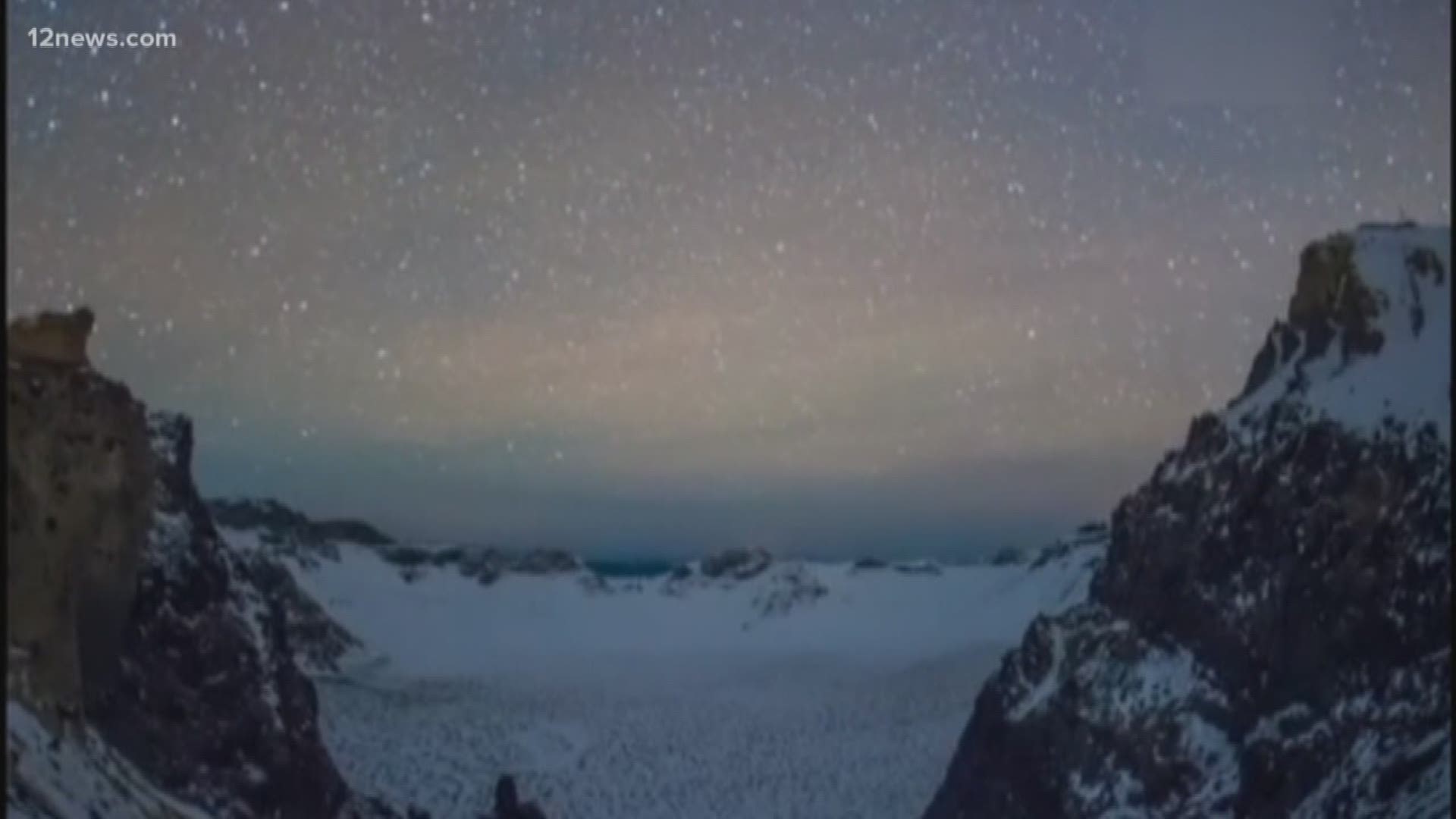Keep your eyes to the sky! The sky will put on a stunning light show this week, all thanks to a big meteor shower.
The annual Geminid meteor shower will take place Thursday, Dec. 13 and Friday, Dec. 14 and a local expert says this year's show will be particularly awesome.
“This is an annual meteor shower that we know about," said Nicholas Moskovitz, an astronomer at Lowell Observatory in Flagstaff. "It’s actually one of the biggest meteor showers of the year.”
He says there’s a lot of complexity to the stellar solar event. It’s a very big shower with a bunch of mini showers connected to it. Moskovitz says it’s particularly favorable this year because the moon will be nice and dark. That means good viewing conditions.
“Thursday or Friday night around 2 a.m. is when the meteor shower peaks," Moskovitz said. "If you’re lucky and you get to a nice dark site, you may see upwards of 40, 50, 60 meteors per hour.”
The Geminid meteor shower is named after the Gemini constellation, so if you can find that constellation, that’s going to be your best bet for spotting the spectacular event.
“It will be coming from a pretty wide patch of the sky,” he said.
Moskovitz says you don’t need any binoculars or fancy equipment to see the sky sparkle, in fact using your naked eye is the best way to go.
“You just want to get out to a dark site and let your eyes kind of adjust to the dark and start watching the show,” said Moskovitz.
It’s a dazzling show you can enjoy right from your own backyard.
“From the general perspective of understanding our cosmos and what’s going on out there in the universe, it’s great for people to be paying attention and being able to go out and witness these types of events,” he said.
If you live in northern Arizona, a great place to observe the meteor shower is at Lowell Observatory. There you can talk with educators on the nights of the 13th and 14th. They can help point out where the meteor showers are coming from and answer any questions you might have.

